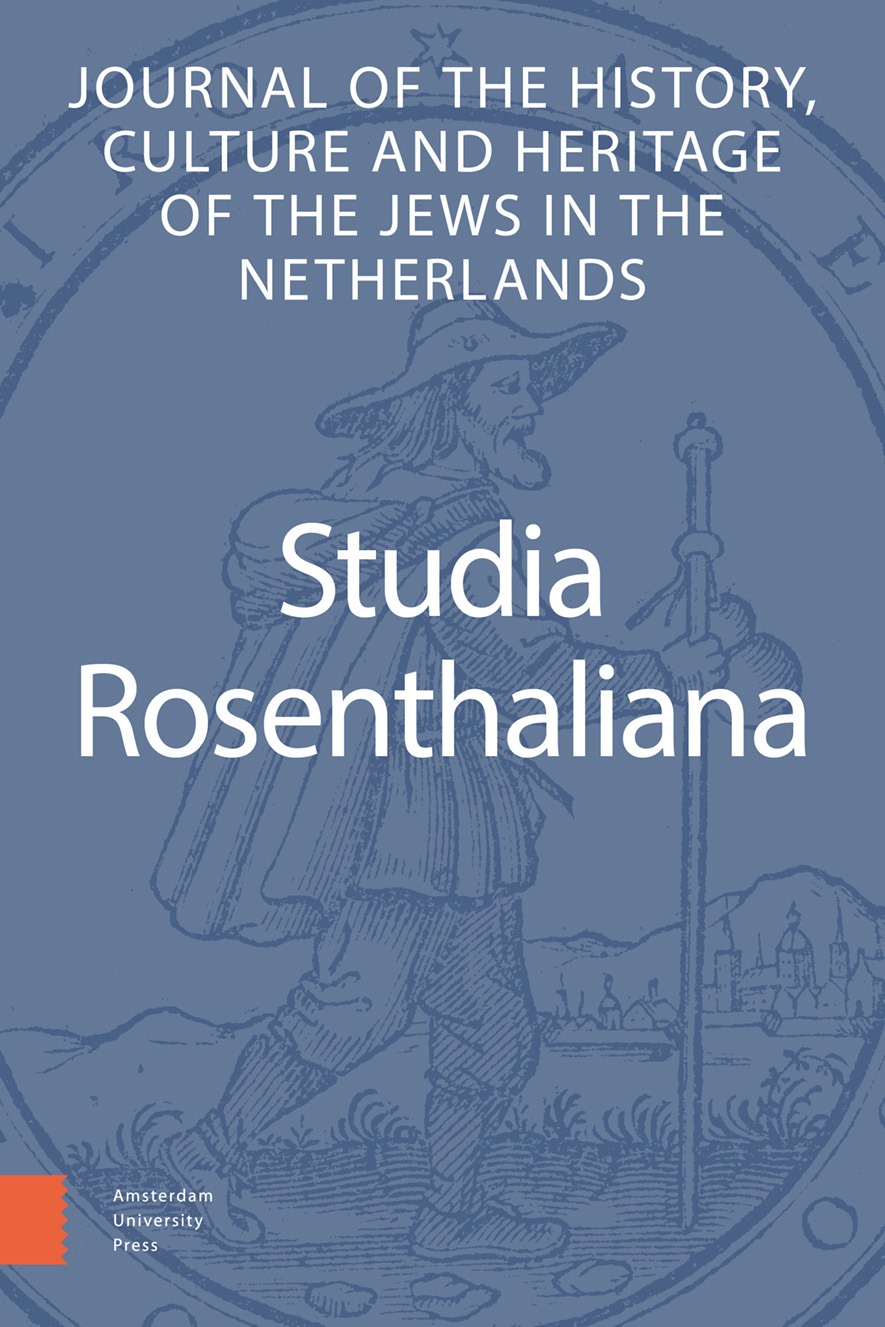- Home
- A-Z Publications
- Studia Rosenthaliana
- Previous Issues
- Volume 50, Issue 2, 2024
Studia Rosenthaliana - Volume 50, Issue 2, 2024
Volume 50, Issue 2, 2024
- Article
-
-
-
The Ashkenazi Meat Hall in Amsterdam, 1673-1815
More LessAuthor: Ronny ReshefAbstractThis study analyses the Ashkenazi meat hall in Amsterdam from 1673 to 1815, identifying five distinct phases in its development. It examines the challenges faced by the institution and the leadership’s adaptive strategies. The meat hall served multiple crucial functions: preserving Jewish identity through halachic adherence, sustaining communal welfare via indirect taxation, and mediating relations with municipal authorities. The identified phases are: (1) Establishment and Institutionalization (1673-1736); (2) Standardization and Accountability (1737-1764); (3) Enhanced Anti-Smuggling Measures (1764-1790); (4) Decentralisation (1790-1808); and (5) Reorganisation (1808-1815). Findings reveal persistent opposition throughout the hall’s history, manifested in recurring violations. Ultimately, the separation of state and religion necessitated a fundamental restructuring of the meat hall, reflecting broader societal changes. This research contributes to our understanding of communal governance, religious institutions, and socio-economic adaptations in early modern Jewish communities.
-
-
-
-
Leopold Immanuel Jacob van Dort’s Scholarly Visit to Cochin
More LessAuthor: Mascha van DortAbstractThe Dutch East India Company (VOC) played a significant role in commerce and economic innovation during the seventeenth and eighteenth centuries. Beyond its economic pursuits, the VOC facilitated substantial cultural exchanges, exemplified by those undertaken by Leopold Immanuel Jacob van Dort, a Hebrew professor. Van Dort’s activities included translating the Qur’ãn and the New Testament into Hebrew, printing Jewish prayer books for the Jews of Cochin, India, and led to the publication of the “Chronicles” of the Jews of Cochin in Europe. Van Dort’s role as a cultural mediator is further underscored by his extension of Ezekiel Rahabi’s network to Tobias Boas in The Hague, facilitating ongoing exchanges between Dutch and Cochin Jews. These initiatives aimed at fostering cultural understanding and strengthening diplomatic and strategic ties between the VOC, the Paradeśi Jews, and surrounding political forces, with the Jews serving as key intermediaries in these negotiations. His collaboration with Ezekiel Rahabi and support from the VOC facilitated these initiatives, illustrating a strategic alliance between the VOC and the Jews of Cochin that extended beyond mere economic transactions. This underscores the VOC’s impact beyond economic influence, highlighting its role in cultural, political, and religious exchanges.
-
-
-
Re-examining Max Heymans
More LessAuthor: Kelsey AkersAbstractMax Heymans was a Jewish fashion designer, often considered the ‘first Dutch couturier,’ who designed clothing in Amsterdam from the 1940s to the 1990s. His works have long been characterized as ‘timeless’ imitations of ‘French fashion’ by the media and academic literature. This article will re-examine his works, calling into question such characterizations through three folds of examination. First, Heymans’ fashion designs are examined through their physical materiality and representation in film and photography. Second, the personality and background of Heymans are analyzed to better understand his self-identity as a Jewish queer man. Third, the interaction between Heymans’ identity and his designs is reviewed. Through these three lenses of inquiry, it is concluded that Heymans’ designs were not ‘timeless’ but instead developed alongside the trends in fashion. Heymans’ identity as a queer Jewish man minimally influenced his designs. It was rather his Dutch nationality that likely guided his designs.
-
- Book Reviews
Volumes & issues
Most Read This Month


